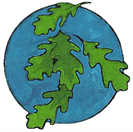


Sources:
Trees of North America- A guide to field identification-a Golden Field Guide from St. Martin's Press © 2002 By C. Frank Brockman p.32
The Encyclopedia of North American Trees by Sam Benvie. Firefly Books Ltd.,2000 Buffalo, NY © 2000 Sam Benvie p.179, 180
Diseases of Trees and Shrubs, 2nd edition, by Wayne A. Sinclair and Howard H. Lyon, © 2005 Cornell University, Cornell University Press, p. 298
Herbal, The Essential Guide to Herbs for Living, by Deni Brown, © 2001 Pavilion Books, an imprint of Anova Books Company LTD. 10 Southcombe Steet, London W13 0RA. 2001 Edition published by Metro Books. Text © 2001 Deni Brown p. 208, 211
USDA, NRCS. 2011. The PLANTS Database (<http://plants.usda.gov/>, 22 August 2011). National Plant Data Team, Greensboro, NC 27401-4901
Gucker, Corey L.. 2007. Pinus rigida. In: Fire Effects Information System, [Online]. U.S. Department of Agriculture, Forest Service, Rocky Mountain Research Station, Fire Sciences Laboratory (Producer). Available: http://www.fs.fed.us/database/feis/ [2011, August 22].
Trees of North America- A guide to field identification-a Golden Field Guide from St. Martin's Press © 2002 By C. Frank Brockman p.32
The Encyclopedia of North American Trees by Sam Benvie. Firefly Books Ltd.,2000 Buffalo, NY © 2000 Sam Benvie p.179, 180
Diseases of Trees and Shrubs, 2nd edition, by Wayne A. Sinclair and Howard H. Lyon, © 2005 Cornell University, Cornell University Press, p. 298
Herbal, The Essential Guide to Herbs for Living, by Deni Brown, © 2001 Pavilion Books, an imprint of Anova Books Company LTD. 10 Southcombe Steet, London W13 0RA. 2001 Edition published by Metro Books. Text © 2001 Deni Brown p. 208, 211
USDA, NRCS. 2011. The PLANTS Database (<http://plants.usda.gov/>, 22 August 2011). National Plant Data Team, Greensboro, NC 27401-4901
Gucker, Corey L.. 2007. Pinus rigida. In: Fire Effects Information System, [Online]. U.S. Department of Agriculture, Forest Service, Rocky Mountain Research Station, Fire Sciences Laboratory (Producer). Available: http://www.fs.fed.us/database/feis/ [2011, August 22].
Map courtesy USDA NRCS PLANTS Database
Pitch Pine,
Pinus rigida Mill.
Pinus rigida Mill.
Common names: Candlewood Pine, Torch Pine
State List: CT, DE, GA, IL, IN, KY, MA, MD, ME, MN, NC, NH, NJ, NY, OH, PA, RI, SC, TN, VA, WV
Canada: NS, ON, QC
Visit the Image Gallery for more photos
View all North American native pine tree species.
Botanical
Pitch pine is a small to medium sized native North American conifer. It usually grows between 50 and 80 feet tall and 1 to 2 feet in diameter. Sources have conflicting information on the growth rate of Pinus rigida; however, most say it is a rapid grower with the exception being a report in the Fire Effects Information System detailing its growth as slow. The USDA PLANTS Database states Pitch pine will reach 20 feet in 20 years.
Needles are in bundles of 3, are 3 to 5 inches long, and yellowish green. They are stiff, sharp tipped, can be straight or slightly twisted, and persist on trees for 2 to 3 years. Found in the tops of trees, female cones are oval, 2 to 3.5 inches in length, and have prickles on each scale. They are yellowish-brown to grayish-brown, remain on trees for several years and some are serotinous, meaning they only open to release the brown,
State List: CT, DE, GA, IL, IN, KY, MA, MD, ME, MN, NC, NH, NJ, NY, OH, PA, RI, SC, TN, VA, WV
Canada: NS, ON, QC
Visit the Image Gallery for more photos
View all North American native pine tree species.
Botanical
Pitch pine is a small to medium sized native North American conifer. It usually grows between 50 and 80 feet tall and 1 to 2 feet in diameter. Sources have conflicting information on the growth rate of Pinus rigida; however, most say it is a rapid grower with the exception being a report in the Fire Effects Information System detailing its growth as slow. The USDA PLANTS Database states Pitch pine will reach 20 feet in 20 years.
Needles are in bundles of 3, are 3 to 5 inches long, and yellowish green. They are stiff, sharp tipped, can be straight or slightly twisted, and persist on trees for 2 to 3 years. Found in the tops of trees, female cones are oval, 2 to 3.5 inches in length, and have prickles on each scale. They are yellowish-brown to grayish-brown, remain on trees for several years and some are serotinous, meaning they only open to release the brown,

winged seeds when fire activated. Male pitch pine cones can be found in the lower branches. Like the cones, the rough bark is yellowish-brown to grayish-brown with large, thick, scaly plates. Some accounts describe the bark color being from red-brown to black as well. The overall structure has a straight to slightly curved trunk with a wide spreading, irregular crown.
Modern, Historical, and Native American Uses
Native Americans had many uses for Pitch pine. Iroquois used the pitch for a variety of ailments and developed treatments for rheumatism, burns and cuts. They also found it had use as a laxative. The Shinnecock tribe of what is now New York, found similar uses and made poultices for boils and abscesses. The Cherokee nation had found a few non-medicinal uses including using the wood in canoe making as well as for carving material. Pitch pine is also a major source of turpentine, which is distilled from the tree resin. In years past, turpentine was used in treatments for respiratory complaints like coughing, bronchitis, common colds, and influenza as steam baths and inhalers. Skin problems, wounds and sores were also treated with poultices and salves. In the late 1800's, it was even used to treat tuberculosis. The wood of pitch pine is rich in resin; so much so that short pieces of timber were used as torches. Besides being a good source for resin and turpentine, it is also a good source for tar. Currently, Pinus rigida is used for pulpwood and reforestation of dry sandy sites. It is sometimes found as nursery stock but not commonly used in landscape applications.
Pests and Diseases
In the insect world, the Southern pine beetle is a notable pest. Pitch pine is also susceptible to Sweetfern blister rust, which causes cankers. Most infections occur before trees are age 10.
Propagation
Pitch pine requires cold stratification and is propagated by bare root, container and seeds.
Native Americans had many uses for Pitch pine. Iroquois used the pitch for a variety of ailments and developed treatments for rheumatism, burns and cuts. They also found it had use as a laxative. The Shinnecock tribe of what is now New York, found similar uses and made poultices for boils and abscesses. The Cherokee nation had found a few non-medicinal uses including using the wood in canoe making as well as for carving material. Pitch pine is also a major source of turpentine, which is distilled from the tree resin. In years past, turpentine was used in treatments for respiratory complaints like coughing, bronchitis, common colds, and influenza as steam baths and inhalers. Skin problems, wounds and sores were also treated with poultices and salves. In the late 1800's, it was even used to treat tuberculosis. The wood of pitch pine is rich in resin; so much so that short pieces of timber were used as torches. Besides being a good source for resin and turpentine, it is also a good source for tar. Currently, Pinus rigida is used for pulpwood and reforestation of dry sandy sites. It is sometimes found as nursery stock but not commonly used in landscape applications.
Pests and Diseases
In the insect world, the Southern pine beetle is a notable pest. Pitch pine is also susceptible to Sweetfern blister rust, which causes cankers. Most infections occur before trees are age 10.
Propagation
Pitch pine requires cold stratification and is propagated by bare root, container and seeds.


Habitat
This is a tree species of poor sites with dry, poor, soils ranging from well-draining to swampy. Pitch pine is shade intolerant and adapted to medium and coarse textured soils with a pH between 3.5-5.1. Occasionally, it can be found on better sites but tends to more often populate dry, steep ridges and plains, as well as river valleys and swamps with more moisture. Saplings are more tolerant of flooding, becoming hardened with exposure early on to flood waters. Annual rainfall requirements are 37 to 56 inches but it does have a moderate drought tolerance. Pitch pine also requires 112 frost free days; moreover, it is extremely tolerant of cold temperatures, surviving down to -43°F. Also fire resistant, this native plant has an ability unusual for a conifer tree. After being top killed by fire, Pinus rigida can resprout from its collar, becoming a multi-stemmed shrub. Although fire resistant, it is has a low fire tolerance. How can this be? It means while it can survive fire by resprouting, it doesn't have many defenses from actually catching fire.
This is a tree species of poor sites with dry, poor, soils ranging from well-draining to swampy. Pitch pine is shade intolerant and adapted to medium and coarse textured soils with a pH between 3.5-5.1. Occasionally, it can be found on better sites but tends to more often populate dry, steep ridges and plains, as well as river valleys and swamps with more moisture. Saplings are more tolerant of flooding, becoming hardened with exposure early on to flood waters. Annual rainfall requirements are 37 to 56 inches but it does have a moderate drought tolerance. Pitch pine also requires 112 frost free days; moreover, it is extremely tolerant of cold temperatures, surviving down to -43°F. Also fire resistant, this native plant has an ability unusual for a conifer tree. After being top killed by fire, Pinus rigida can resprout from its collar, becoming a multi-stemmed shrub. Although fire resistant, it is has a low fire tolerance. How can this be? It means while it can survive fire by resprouting, it doesn't have many defenses from actually catching fire.
Pitch pine cones, Photo citation: Robert H. Mohlenbrock
@ USDA NRCS PLANTS Database/USDA NRCS. 1995. Northeast wetland flora: Field office guide to plant species. Northeast National Technical Center, Chester
@ USDA NRCS PLANTS Database/USDA NRCS. 1995. Northeast wetland flora: Field office guide to plant species. Northeast National Technical Center, Chester



Friday, May 02, 2025

™
|
|
|
|
|
| A-Z scientific | ||
| A-Z by Common Name | ||
| Families | ||
| Browse by State | ||
| Rare or Endangered Species | ||
| Trees_with_Special_Uses | ||
| Tallest and Biggest |
| Aceraceae Maple Family | ||
| Anacardiaceae Sumac Family | ||
| Annonaceae Custard Apple Family | ||
| Aquifoliaceae Holly Family | ||
| Arecaceae, Palm Family | ||
| Betulaceae Birch family | ||
| Bignoniaceae Trumpet Creeper Family | ||
| Burseraceae Frankincense Family | ||
| Caprifoliaceae Honeysuckle Family | ||
| Chrysobalanaceae Coco-plum Family | ||
| Cornaceae Dogwood Family | ||
| Cupressaceae Cypress Family | ||
| Cyrillaceae Cyrilla Family | ||
| Ebenaceae Ebony Family | ||
| Ericaceae Heath Family | ||
| Fabaceae Pea Family | ||
| Fagaceae Beech Family | ||
| Hamamelidaceae Witch Hazel Ffamily | ||
| Hippocastanaceae Horse Chestnut Family | ||
| Juglandaceae Walnut Family | ||
| Lauraceae Laurel Family | ||
| Leitneriaceae Corkwood Family | ||
| Magnoliaceae Magnolia Family | ||
| Meliaceae Mahogany Family | ||
| Moraceae Mulberry Family | ||
| Myricaceae Bayberry Family | ||
| Myrsinaceae Myrsine Family | ||
| Myrtaceae Myrtle Family | ||
| Nyctaginaceae Four Oclock Family | ||
| Olacaceae Olax Family | ||
| Oleaceae Olive Family | ||
| Pinaceae Pine Family | ||
| Platanaceae Plane Tree Family | ||
| Polygonaceae Buckwheat Family | ||
| Rhamnaceae Buckthorn Family | ||
| Rosaceae Rose Family | ||
| Rubiaceae Madder Family | ||
| Rutaceae Rue Family | ||
| Salicaceae Willow Family | ||
| Sapindaceae Soapberry Family | ||
| Sapotaceae Sapodilla Family | ||
| Simaroubaceae Quassia Family | ||
| Styracaceae Storax Family | ||
| Symplocaceae Sweetleaf Family | ||
| Theaceae Tea Family | ||
| Tiliaceae Lindon Family | ||
| Ulmaceae Elm Family | ||
| Taxaceae Yew Family | ||
| Yucca Family |
| Maple A-Z |
| sumac_family_a-z |
| custard_apple_family_a-z |
| holly_trees_a-z |
| palm_family_a-z |
| birch_family_a-z |
| trumpet_creeper_family_a-z |
| honeysuckle_family_a-z |
| dogwood_family_a-z |
| cypress_family_a-z |
| heath_family_a-z |
| pea_family_a-z |
| beech_family_a-z |
| walnut_family_a-z |
| magnolia_family_a-z |
| olive_family_a-z |
| rose_family_a-z |
| willow_family_a-z |
| franklinia |
| elm_family_a-z |
| Federal List | ||
| State Lists | ||
| Invasive_species |
| Restoration of the American Chestnut | ||
| Restoration of the American Elm | ||
| Sustainable Forestry |
| Contact Us | ||
| Our Contributors | ||
| Photo of the Month | ||
| Usage Requirements | ||
| FAQ | ||
| Report a Broken Link |
| photo_submission |
| Photo Store |

Custom Search
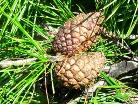
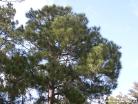
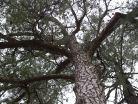
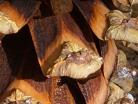
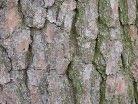
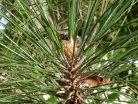
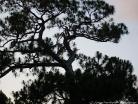
Want to add your tree to our picture gallery? Click here for details!
Tree lists:
•A-Z by scientific
name
•A-Z by common
name
•By Family
For state A-Z list click state name below.
•A-Z by scientific
name
•A-Z by common
name
•By Family
For state A-Z list click state name below.
-Color denotes a tree that is rare or endangered


